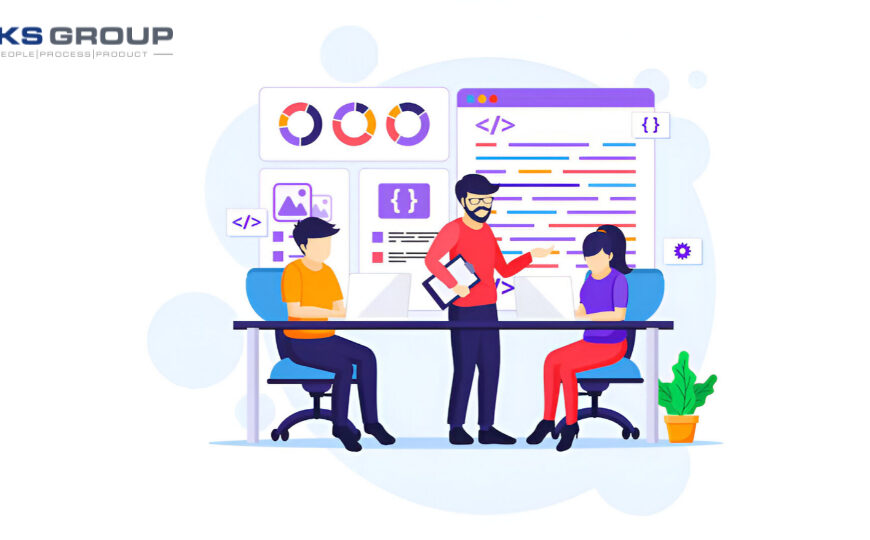The manufacturing sector is the backbone of economies worldwide, driving innovation, creating jobs, and ensuring the seamless production of goods and services. However, hiring the best talent in this competitive industry can be challenging due to its evolving demands, technological advancements, and a shrinking talent pool. If you want to optimize your recruitment strategies to attract and retain top-tier talent, this blog will guide you through actionable steps and insights.
Why Hiring the Best Talent in Manufacturing Matters
- Boosting Productivity: Skilled employees reduce downtime and maximize production efficiency.
- Driving Innovation: With advancements like automation and Industry 4.0, skilled professionals foster innovation and implement cutting-edge solutions.
- Ensuring Compliance: Expert workers understand and follow safety and quality standards, mitigating risks and liabilities.
Challenges in Hiring for the Manufacturing Sector
- Talent Shortage: The aging workforce and a lack of younger professionals entering the industry create a gap.
- Competition: Companies often compete for the same pool of qualified candidates.
- Evolving Skill Sets: Rapid technological changes require workers with specialized skills, such as operating AI-driven machinery or robotics.
Proven Strategies to Hire the Best Talent
1. Define the Role Clearly
Craft detailed job descriptions outlining responsibilities, skills, qualifications, and growth opportunities. Use specific titles like CNC Machine Operator, Quality Assurance Specialist, or Supply Chain Analyst to attract the right candidates.
Tips:
- Avoid jargon; keep the language clear and concise.
- Highlight unique aspects of your company, such as employee development programs or advanced technology in use.
2. Target Niche Job Boards and Platforms
General job boards may not yield the best results for manufacturing roles. Focus on platforms like ManufacturingJobs.com, Indeed Manufacturing, and LinkedIn Groups dedicated to the sector.
Pro Tip: Engage with forums and industry-specific communities where skilled professionals network.
3. Leverage Employee Referrals
Employees often have connections within the industry. Implement a referral program to incentivize them for bringing in quality candidates.
4. Invest in Employer Branding
Candidates assess your company’s reputation before applying. Showcase your workplace culture, diversity, and innovation through social media, blogs, and employee testimonials.
Key Actions:
- Share videos highlighting day-to-day operations and team dynamics.
- Demonstrate sustainability efforts, as eco-friendly practices appeal to modern candidates.
5. Use Technology in Recruitment
Leverage AI-driven tools to streamline recruitment processes. These tools can match candidates’ skills with job requirements and predict their fit within your company culture.
Examples:
- Applicant Tracking Systems (ATS) to manage resumes.
- Gamified assessments for technical skill evaluation.
6. Upskill and Reskill Potential Candidates
Sometimes, the perfect candidate might lack one or two required skills. Create training programs to bridge these gaps, ensuring a better long-term fit.
7. Offer Competitive Compensation and Benefits
Manufacturing professionals often compare pay scales across industries. Ensure your packages align with or exceed market standards.
Don’t Forget:
- Include benefits like health insurance, retirement plans, and paid time off.
- Offer unique perks such as flexible work hours, wellness programs, or tuition reimbursements.
8. Tap into Apprenticeships and Trade Schools
Collaborate with trade schools, technical colleges, and apprenticeship programs to create a pipeline of skilled workers. This approach helps build loyalty among young professionals.
What Makes a Manufacturing Employee Stand Out?
Look for candidates who possess the following traits:
- Technical Expertise: Familiarity with specific machinery, software, or processes.
- Adaptability: The ability to learn new technologies and methods.
- Problem-solving skills: Analyzing and addressing production challenges effectively.
- Teamwork: Collaboration is crucial in assembly lines and other manufacturing setups.
Retaining Top Talent: The Other Half of the Battle
Hiring the best talent is only part of the equation; retaining them is equally crucial. Here’s how:
1. Career Development Opportunities
Offer clear paths for promotion and professional growth through certifications, workshops, and mentorship programs.
2. Recognition and Rewards
Appreciate employees for their contributions through awards, bonuses, and public acknowledgment.
3. Maintain a Positive Work Environment
Ensure safety standards are met, promote inclusivity, and address grievances promptly to foster employee satisfaction.
4. Stay Ahead in Technology
Regularly upgrade your systems and tools to make employees’ work more efficient and less repetitive.
Emerging Trends in Manufacturing Recruitment
- Diversity and Inclusion Initiatives
Hiring diverse teams enhances creativity and problem-solving. Actively seek candidates from various backgrounds. - Remote Work in Manufacturing
Though limited, roles like design engineering or supply chain management can be partially remote. Offering flexibility can attract top talent. - Focus on Green Manufacturing
Professionals today prefer companies that prioritize sustainability. Highlight eco-friendly initiatives during the hiring process.
The Future of Hiring in Manufacturing
As the manufacturing sector evolves, so will the strategies to attract top talent. Companies that adapt quickly by embracing technology, focusing on continuous improvement, and understanding the aspirations of modern professionals will lead the pack.
By combining traditional recruitment methods with modern trends and tools, you can ensure your organization attracts and retains the best talent available.
















